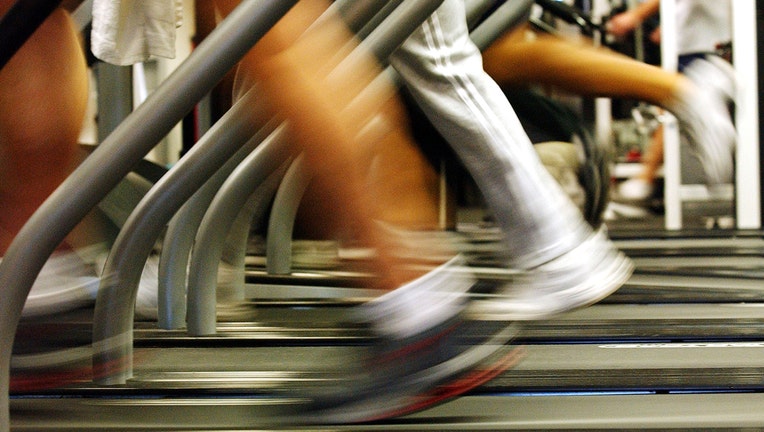Study: Gym workouts may increase COVID-19 infection risk; here's how to stay safe

People run on treadmills at a New York Sports Club in Brooklyn, New York (Photo by Spencer Platt/Getty Images)
Previous studies have identified indoor group exercise as a situation where COVID-19 outbreaks can occur, but new research shows this can be exacerbated by the level of fitness intensity.
In a study, published last month in the Proceedings of the National Academy of Sciences (PNAS), researchers in Germany designed a method for measuring aerosol particle emission (exhaled breath) at rest and during different exercise intensities among eight men and eight women.
"By measuring aerosol particle concentration and ventilation in one individual, we were able to calculate aerosol particle emission that is a more direct measure of the risk of pathogen transmission by aerosol particles by one individual than the aerosol particle concentration in exhaled air or in room air," the study authors wrote.
RELATED: New study reveals best time of day to work out for fat loss, muscle strength
Researchers found that people undertaking strenuous exercise produced on average 132 times more aerosol particles than when they are at rest, with no significant difference between women and men.
In addition, fitter, endurance-trained subjects exhaled 85% more particles during maximal exercise than untrained subjects which was considered a significant difference, according to the team.
Protective measures recommended for high-intensity exercise
"This finding can be used to design improved mitigation strategies for indoor group exercise," the study’s authors added, noting that the data has important implications for infection control during indoor group exercise. "Together, these data might partly explain superspreader events, especially during high-intensity group exercise indoors and suggest that strong infection prevention measures are needed especially during exercise at an intensity that exceeds ∼2 W/kg."
The researchers said the results indicate that protective measures inside gyms may be important, including keeping about five feet between exercisers during workouts. They also said gyms should consider 15-minute airing breaks in between classes, pre-exercise infection testing of participants, safety shields between exercisers, limited time spent in an exercise room and the wearing of masks even during exercise.
RELATED: Study: Exercise can strengthen brain function, prevent dementia
A limitation of the study included the non-assessment of the hydration status among the subjects, as the hydration status can affect aerosol particle emission. Further Investigations of influencing factors like airway and whole-body hydration status during exercise on aerosol particle generation will be needed, the authors noted.
Safest ways to workout at the gym amid the COVID-19 pandemic
Experts said it's safest to work out in gyms where people are vaccinated and masked. However, gyms around the country have their own policies.
RELATED: Exercise after COVID-19 vaccine may increase antibodies, study finds
The least risky area to exercise at a gym is considered to be the weight room because people can distance themselves. However, group classes like a spin class are considered to be high risk due to the inability to properly distance with fixed equipment.
The area with treadmills is considered "moderate risk," according to some health officials.
RELATED: Public health officials detail best ways to stay safe at indoor gyms
Earlier this year, Eddy Perez, the regional director of Stratus Building Solutions, a company specializing in gym cleaning, gave tips to FOX 11 Los Angeles
"You just have to take precautions. If you're doing any of the floor exercises, bring your own floor mats. The floor mats are a magnet. It's one of the germiest items you can have. We recommend that they [gym-goers] wipe down the equipment before and after they use it just to be safe," he said.
Perez also recommended bringing a towel from home to cover handlebars, avoiding placing items on the floor and staying away from tight spaces where people are gathered.


